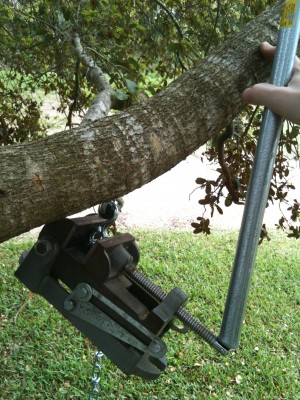Are you or someone you know looking for a fun hobby for yourself and a few buddies?
Acme Catapult is officially for sale!
After 18 years of catapulting adventures, Bob and Doug have decided to retire from chuckin. The ACME Catapult, Bambulance, and all equipment and spare parts are for sale. It was a tough year long decision, but its time to let fresh blood carry on and even set new records.
Please note: this is an extreme hobby, but one that can pay for itself if you promote the machine and are willing to travel a little. They have done many “For Hire” events in addition to several TV appearances. What sets this machine apart is its awesome strength. It can easily hurl objects up to 200 pounds and can set, fire and reset every 15 minutes all day long.
They are selling the entire package; all spare parts, including over 80 springs, two throwing arms, two complete hydraulic power units, hyd. hoses, extra cables, numerous bags and slings, ladders, tool boxes, and tools, etc.
Please call Bob 309-202-0676 or Doug 309-712-2278 for more information.
[The ACME Catapult is the tandem axle monster pumpkin catapult machine that was seen on national television throwing lawn equipment high into the air on ABC’s “My Kind of Town” and also hurling large appliances on NBC’s “The Tonight Show with Jay Leno”. You may have also seen it tossing pumpkins on the TLC Special “Punkin Chunkin”, which was filmed at the 2002 World Championship Punkin Chunkin competition in Delaware. The ACME Catapult team started in 1996 with a much smaller catapult designed to throw pumpkins at a local Pumpkin Festival Contest. Since then the catapult has grown into a tandem axle monster capable of hurling refrigerators and lawn tractors high into the air, or throwing a ten-pound pumpkin 2000 feet!]
Thanks,
Kurt













